The old Hanseatic city of Bremen offers a city center that immediately brings visitors centuries back to the time of the merchants’ overseas trade. The Weser Renaissance is the typical building style of the era and there are loads of beautiful old buildings with the 14th century town hall and the cathedral as some of the most famous.
The town hall and the cathedral are both nice sights, and you should also see Schütting and Bremen’s many large churches on your walk along the cozy streets. Universum and the Haus Atlantis with the stunning Himmelssaal are architectural gems from recent time that should be seen as well. And when on a stroll, remember to include Böttcherstraße and Schlacte in the evening.
The Town Musicians of Bremen is a special story, which is recognized several places in Bremen including a monument to the old tale. The green parks of Bremen complement the old town and the beautiful areas along the river Weser. The city’s historic ramparts form a semicircle around the city, and it is a good idea to take a stroll by the moat or possibly enjoy the sun at the lawns of the Bürgerpark.
Modern Bremen meets technology at the forefront. The science in Universum is popular by many visitors, and you should also make a visit to the whole world history at the Überseemuseum. If you want a day out of town, the port city of Bremerhaven is a good choice, as is Hamburg as the largest city in the region.
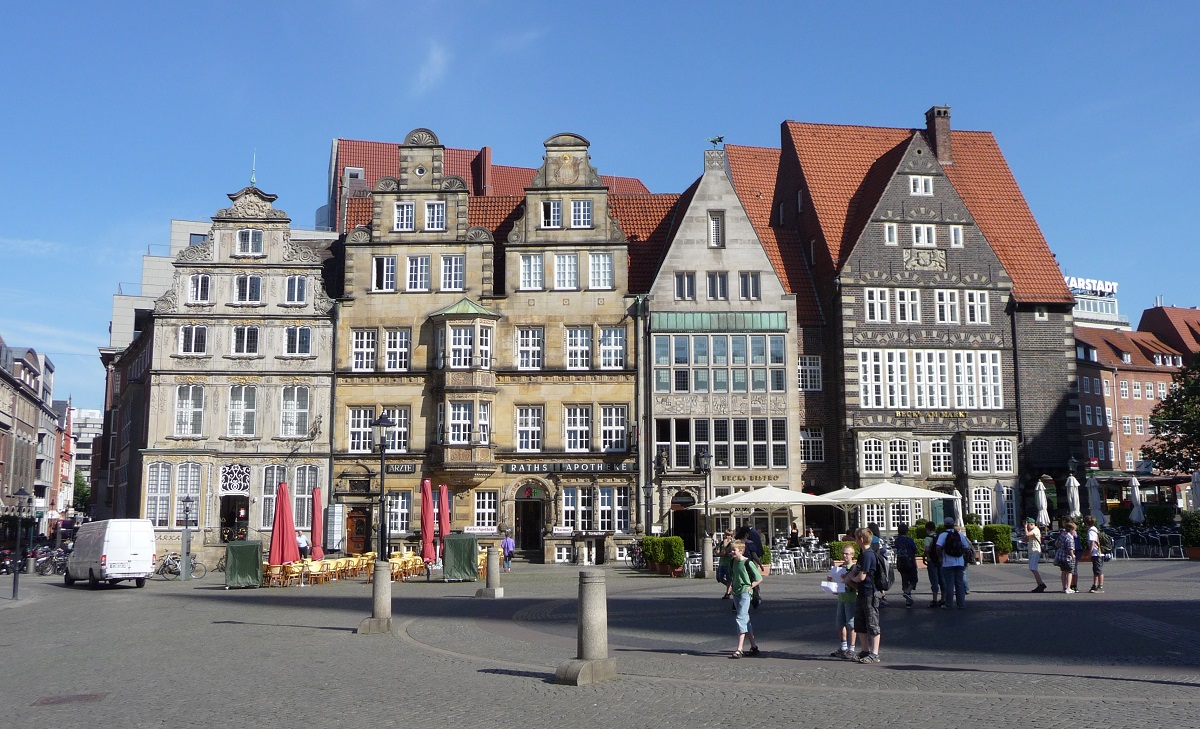
Bremen’s Market Square is one of the city’s most important squares and the absolute center of sights. The irregular square was formed in 1404, where the statue of Bremer Roland was also erected.
The Town Musicians of Bremen are seen everywhere in the city and they are one of Bremen’s popular brands. The musicians come from a tale published by the Grimm brothers.
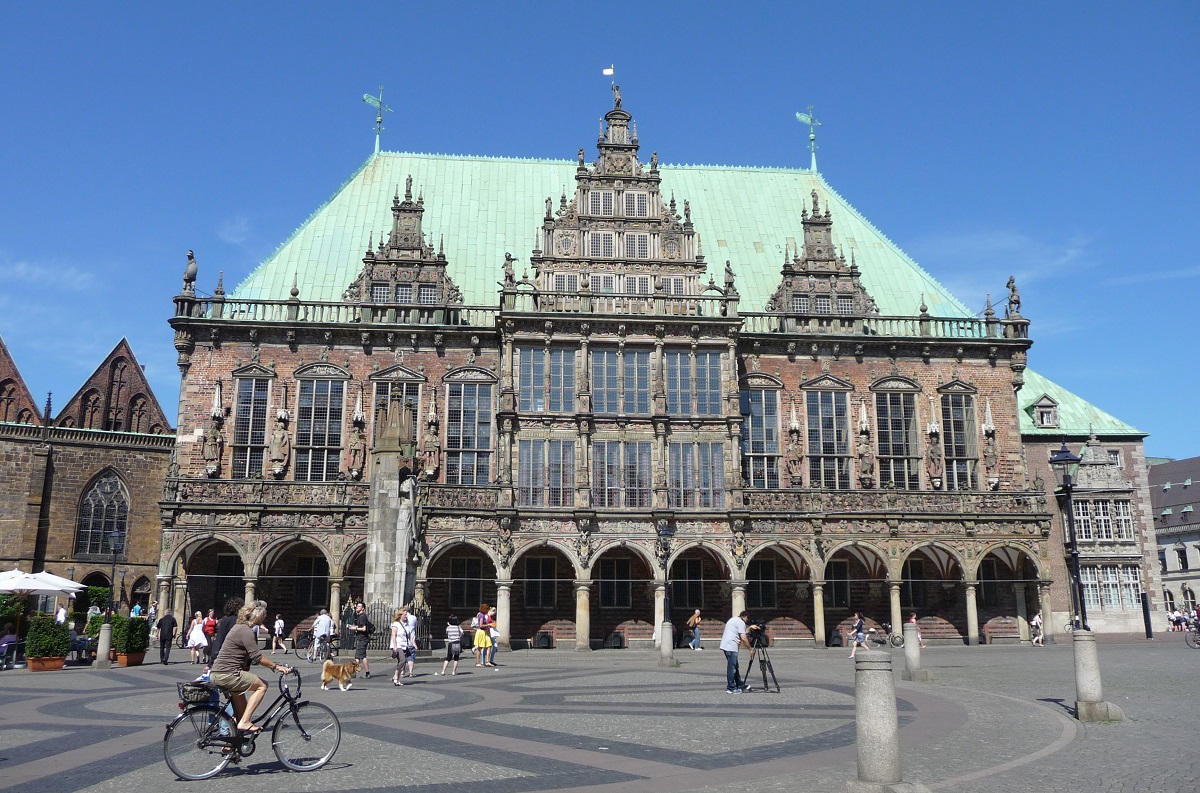
The City Hall is one of the famous old buildings in Bremen. It consists of two parts; Old Town Hall and New Town Hall, where the old part is inscribed in UNESCO’s World Heritage List. The city hall is highly interesting with beautifully decorated rooms and halls.
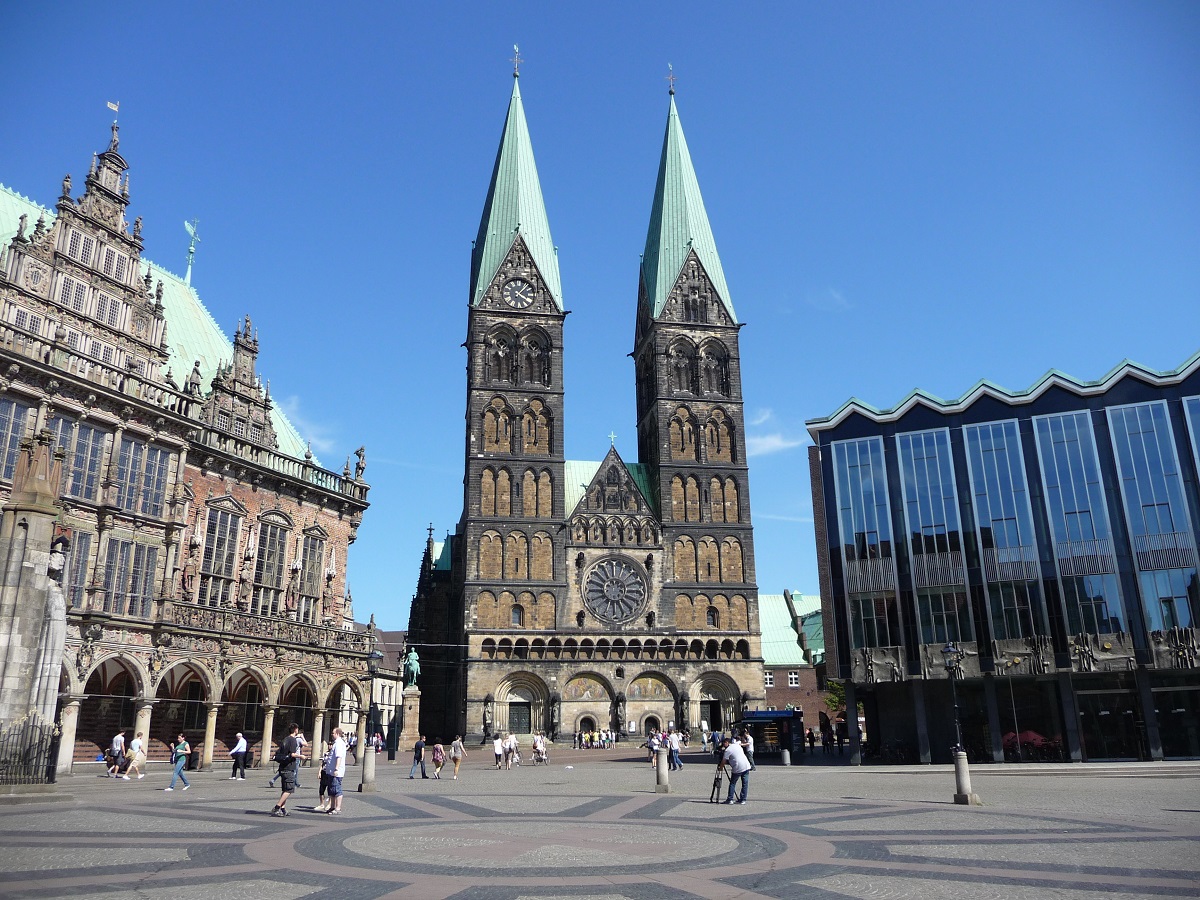
St. Peter’s Cathedral is Bremen’s main Protestant church. Its history dates back to the site’s first church, which was built of wood in 767. Throughout the 1000’s, the church burned several times, and each time it was rebuilt and continuously expanded.
The short alley of Böttcherstraße is a special architectural experience. Most houses were built in the years 1922-1931, and here are several examples of German brick expressionism.
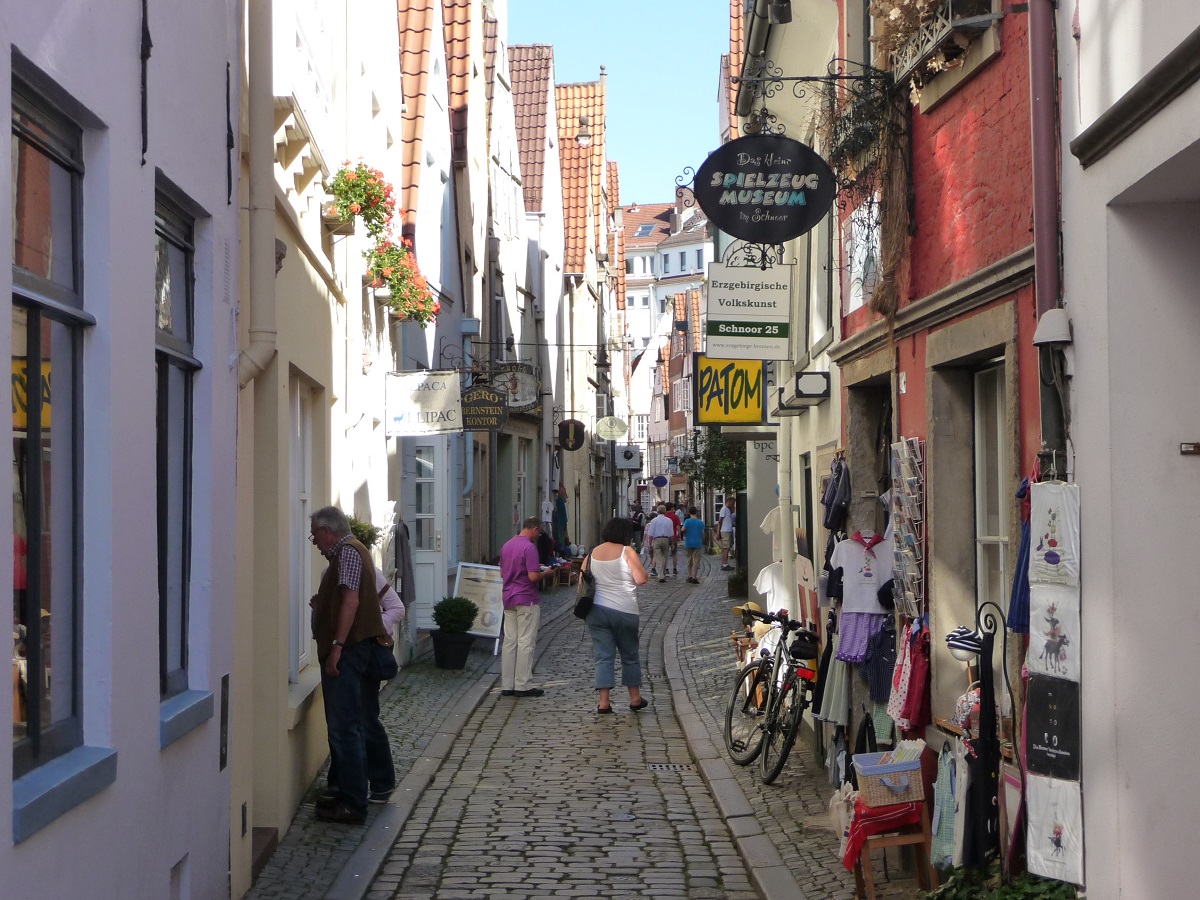
Schnoor is the name of Bremen’s oldest district and on its main street. On a stroll through Schnoor you can clearly see the city’s past. Here are buildings dating back to the 1400s and mainly town houses from the 1600s to the 1700s.
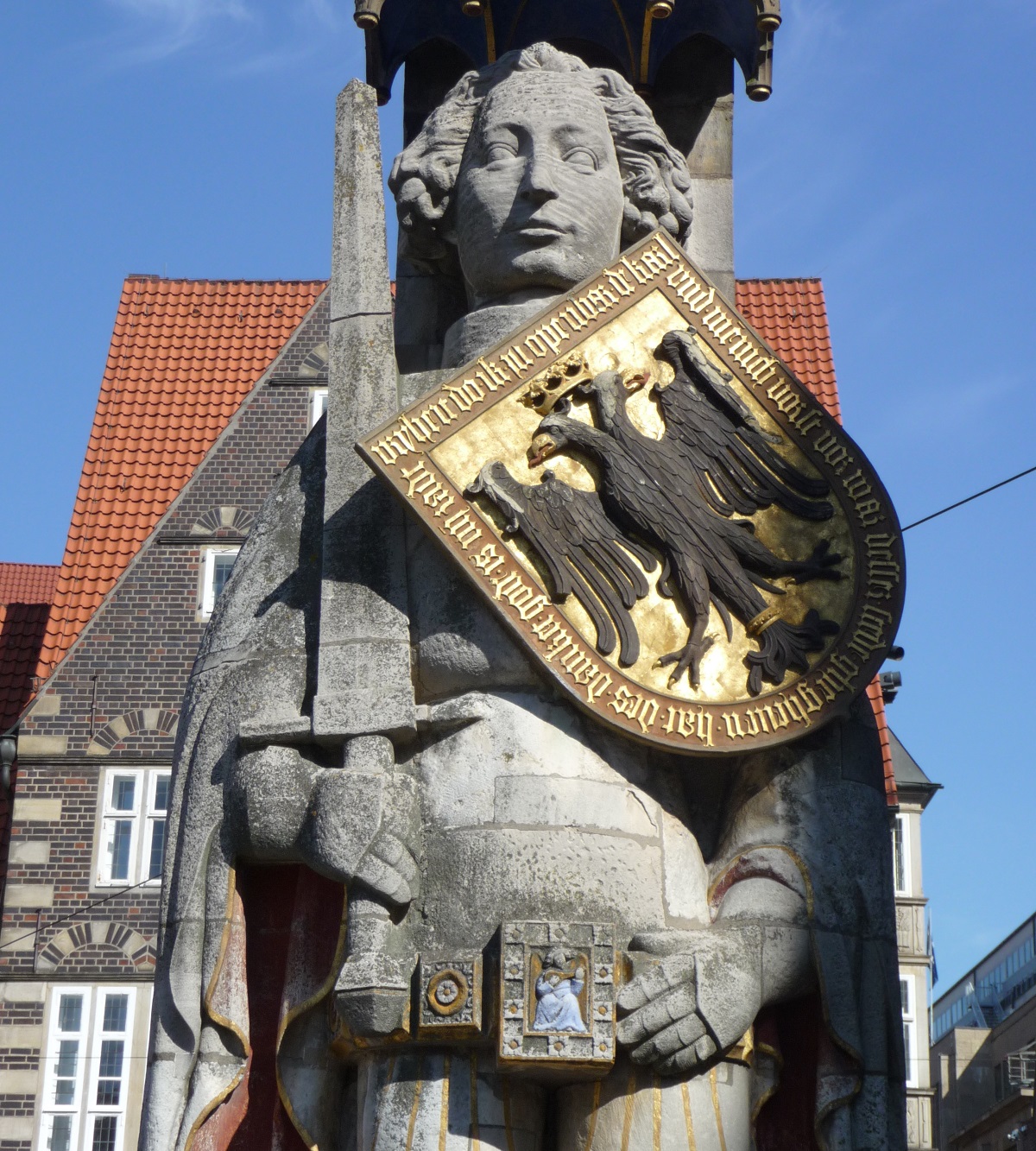
Roland was paladin of the Holy Roman emperor Charlemagne in the 700s. He died in 778 in Roncevaux during an ambush attack. In Bremen, the present Roland was established in 1404 as a protector of the city and symbol of its freedom.
Schütting is the name of the building where Bremen’s merchant’s guild had its seat. Since 1849, the city’s Chamber of Commerce has been located in the Flemish Renaissance building. The stairs are preserved in their original version, while the facade facing the square Am Markt was changed in the 19th century.
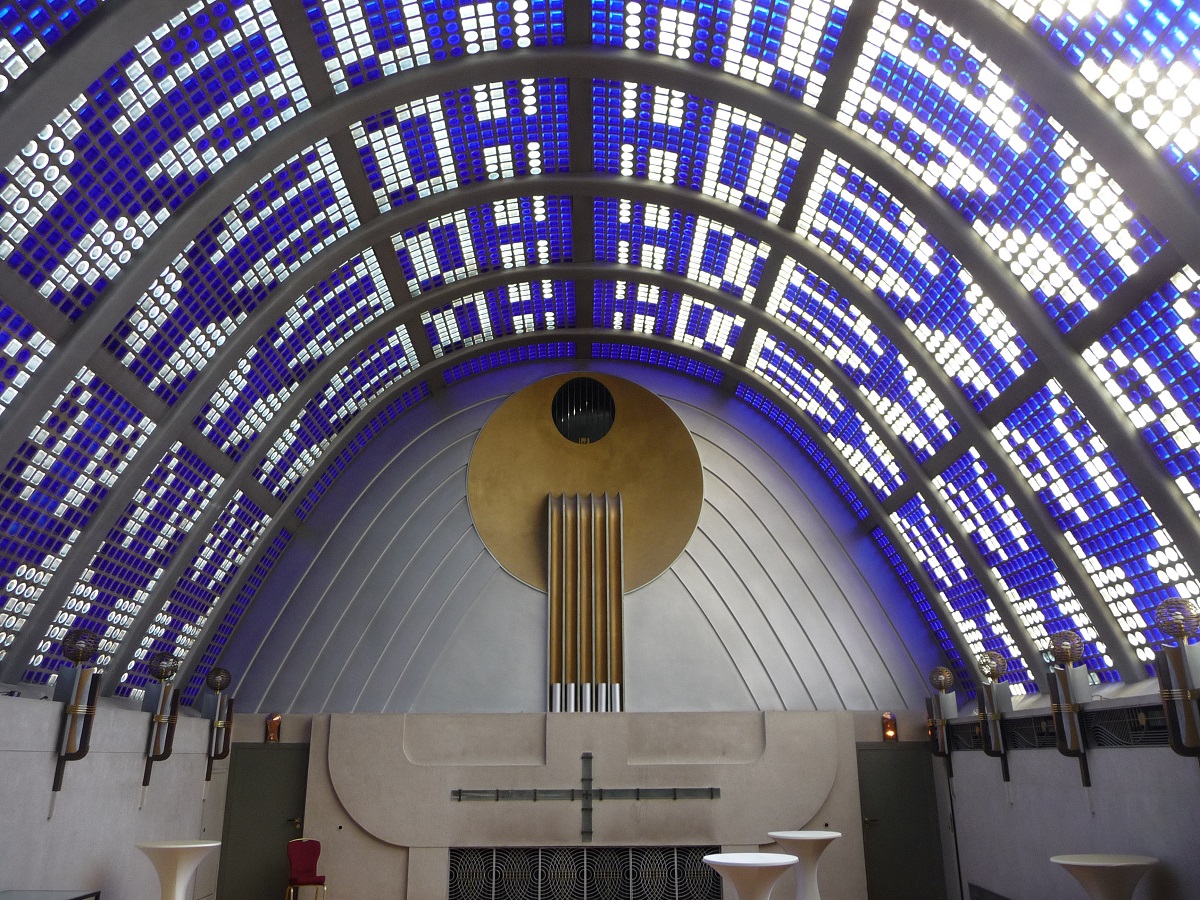
The Hotel Hilton Bremen is conveniently by the interesting Böttcherstraße and the city center. The Himmelssaal, which was almost completely rebuilt after the devastation of World War II, is awesome creation and the original glass stones were used for the reconstruction work.
Domshof is Old Bremen’s most important square. It was where the town hall and cathedral was located. Today you can see a few monuments in the square.

At the Overseas Museum, you can enjoy exhibitions in relation to nature, culture and trade. The focus is overseas countries and continents, and at the same time, parts of Bremen’s history and development is told.
Bremer Ratskeller is a wine cellar and restaurant that dates back as long as Bremen Town Hall, located on top of Ratskeller. Here you will find the country’s largest collection of German wines, of which the oldest is from 1653.
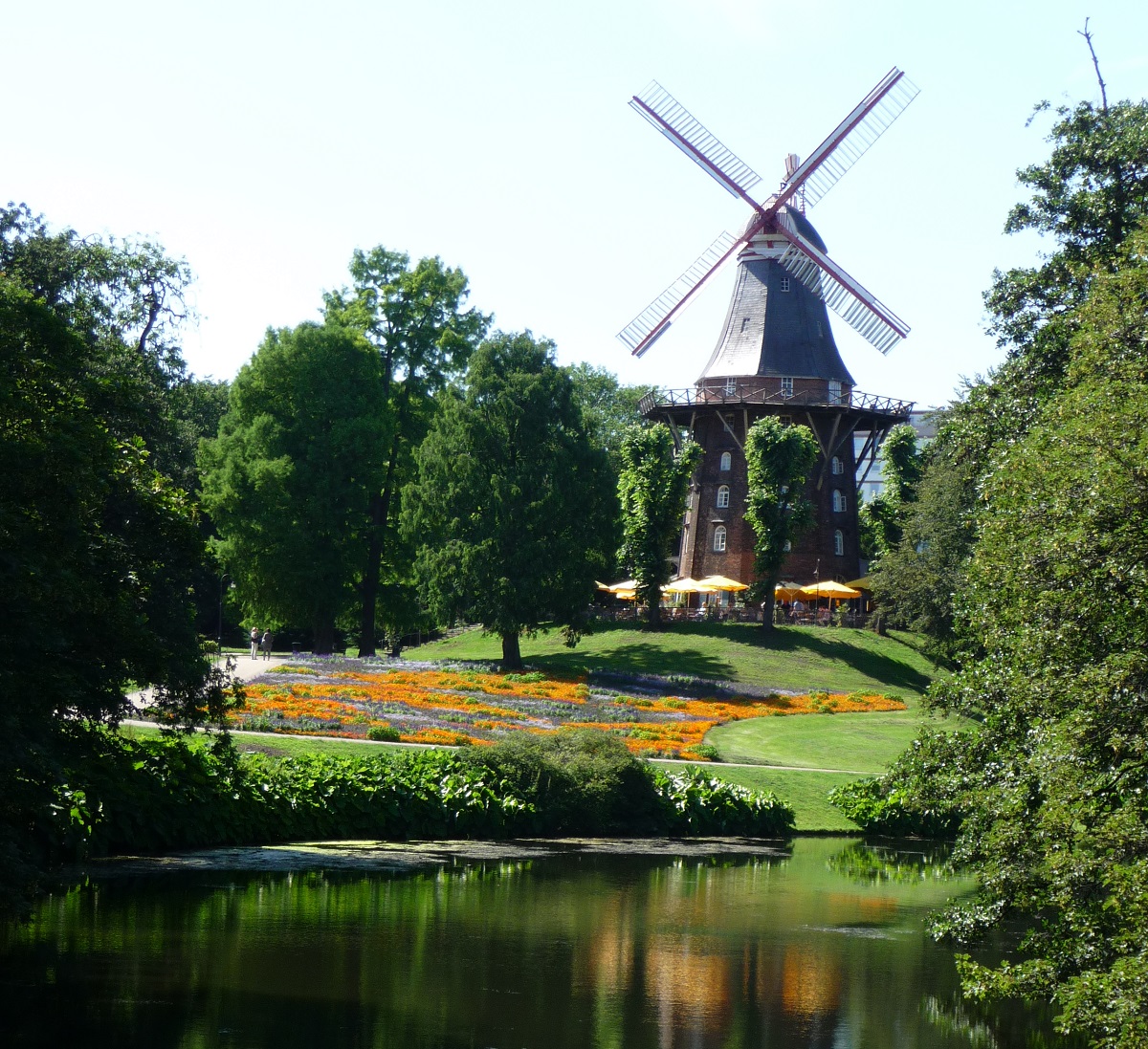
A green belt of parks surround the old town of Bremen. It is a well-frequented, recreational area that, until the 18th century, constituted the fortification of the city.
Kunsthalle Bremen is an art museum located in the area of the city’s former ramparts. The museum’s collection is substantial and spans works from the 1300s to the present day.
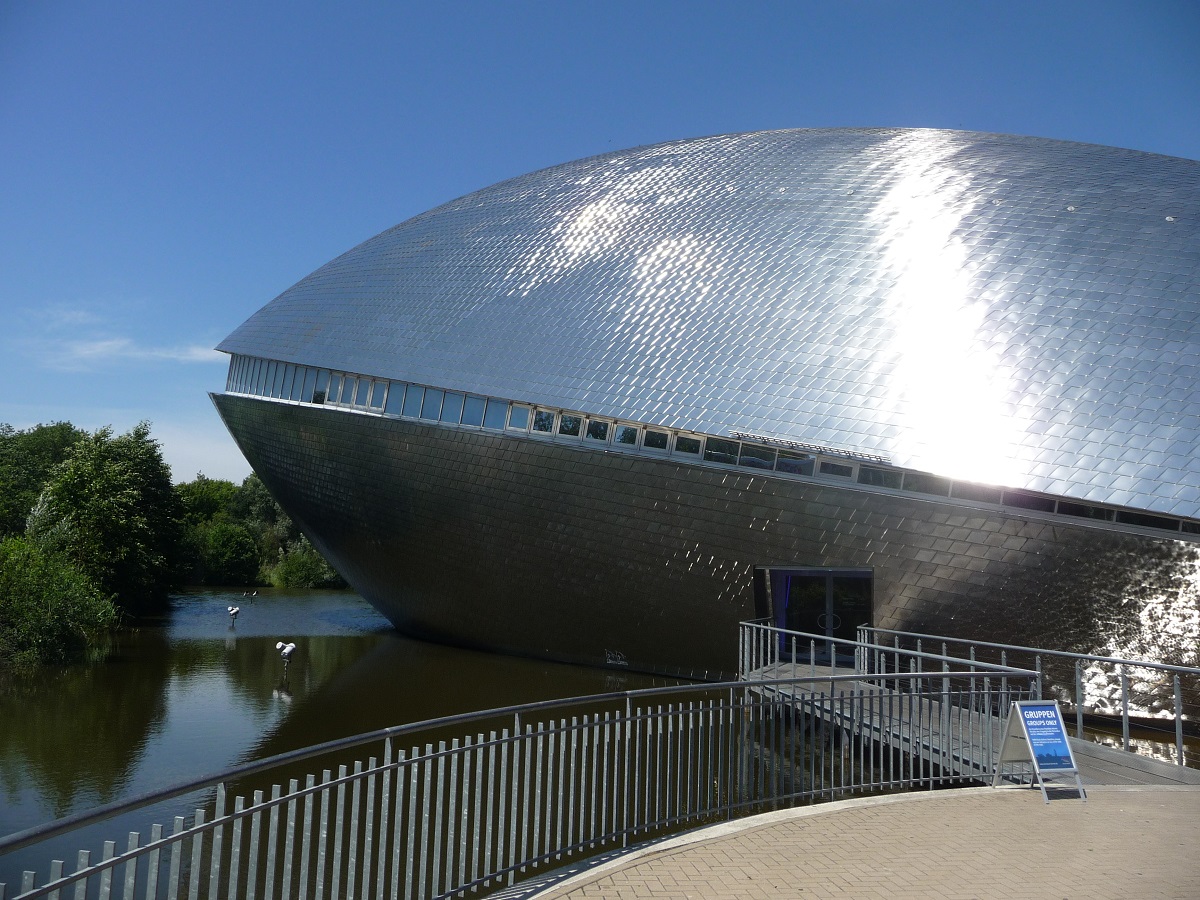
The Universum is a playground of natural sciences, where you can experience the deep sea, the Earth’s interior, the sky, man and other themes.
Schlachte is the name of the street along the Weser embankment in the center of Bremen. It is the main restaurant and beer garden area, but in the past it was a busy dock.
Sögestraße/Domshof
domshof-passage.de
Papenstraße 5
galeria-kaufhof.de
Obernstraße 5-33
karstadt.de
Lloyd Passage
lloydpassage.de
Sögestraße 22
karstadt.de
Sögestraße, Obernstraße, Knochenhauerstraße, Schnoor, Hutfilterstrasse, Am Wall, Ansgaritor
Überseemuseum
Bahnhofsplatz 13
uebersee-museum.de
Serengeti Park Hodenhagen
Am Safaripark 1, Hodenhagen
serengeti-park.de
Spiel Coolisse
Hans-Bredow-Straße 9
spielcoolisse.de
Universum
Wiener Straße 1a
universum-bremen.de
Weltvogelpark Walsrode
Am Rieselbach, Walsrode
weltvogelpark.de
Wuseum Werder Bremen Museum
Franz-Böhmert-Straße 1
werder.de
In the present area of Bremen, the Germanic tribe settled around the birth of Jesus. With migrations towards the 20th century, the tribe merged with the scissors in this area and the Frisians farther to the northwest.
During the following centuries, up to the 7th century, settlements occurred along the river Weser. It was in the area of Bremer Düne that, with its protective height, provided protection against high tide. At the same time, the distance to wads across the river was not long.
Bremer Düne was a dune area of 20-30 kilometers in length, where Bremen’s old town later grew. The dune ridge was at the site of the city’s current cathedral about 10 meters high.
Around the year 150, Bremen was first mentioned under the now-present name of Fabiranum. It was the Greek Claudius Ptolemäus who described the settlements along the Weser; Ptolemy worked as a librarian in Alexandria.
During the Saxon Wars in the years 772-804 the Saxons fought under Widukind against the Frankish people of Charlemagne, and they lost. Charlemagne introduced the law Lex Saxonum, which among other things came to Christianize the population, prohibiting the worship of the ancient gods with Odin at the head.
Bremen became bishop’s seat, and in 787 Willehad became the city’s first bishop. Two years later, he was able to inaugurate the first cathedral at the highest point of the small town. The church was dedicated to Saint Peter, whose key to Paradise became and remains the weapon and symbol of the city.
The bishopric seat in Bremen came in 805 under the archdiocese seat in Cologne, which due to long distance gave the brakes relatively free hands.
The Archdiocese of Hamburg was plundered by the Vikings in 848, and Archbishop Ansgar moved his seat to Bremen, and thus Bremen had become the Archdiocese of Hamburg-Bremen. As a result, missions were opened to Scandinavia and the northeastern Germanic area, and Bremen was now called Northern Rome because of its religious importance and role to the north. From the city, Ansgar emerged as the Nordic apostle and Christian parts of the Scandinavian Vikings.
However, Danish Vikings also came to Ansgar’s new seat, and in 850 they ravaged and destroyed, among other things, Bremen Cathedral, so a new one had to be erected. Around the cathedral, fortifications were built, so this territory, for centuries, was like a city in the city.
Frisian traders sailed on the rivers and the sea north of Bremen, and increasingly they also established themselves in the city, which benefited from the rising activity. Weser’s side arm, Balge, formed in the center of Bremen a natural harbor that was the city’s first.
At this time, the city’s distribution was limited to the area between Balge and the marketplace, but the flourishing of the trade created growth in the city from the area around Balge and the street Langenstraße. This part of the city grew over time with the cathedral city; however, continued a separation between them.
In 888, Archbishop Rimbert was granted commercial rights which included customs and currency. West of the cathedral and not quite in the current marketplace, the city market was established. During the century, Rimbert also minted the first coins in Bremen.
In 937, Otto put the city under royal protection, and he expanded the archdiocese’s values and trading rights. The king handed over possessions to the church, which was allowed to hold two large markets; one of which has evolved into today’s Bremer Freimarkt, which is one of Germany’s oldest still maintained market traditions.
In 1032, the city’s first stone walls were erected. The increasing trade over the sea with not least Norway and England led to an increasing economic influence, which should be protected. A few years later, a major redevelopment of the cathedral began; it was the beginning of the church one can see today.
In 1041, a fire ravaged Bremen, which had to be rebuilt. In the following decades, a significant economic boom was due to increased trade. Bremen became an important trading town for the region during this time, and it was increasingly used as a storage area.
Archbishop Adalbert helped bring the first monks to Bremen in 1050. It was the Benedictine monks who founded a monastery dedicated to St. Paul. The monastery served until 1523.
In the 1100s, the swampy land east of the city was cultivated by Dutch farmers who brought dykes and thereby contributed to Bremen as a booming marketplace. The Dutch had come here with privileges, and from 1171 they also applied to the area west of the city and Weser.
With the growing trade and prosperous economy, the influence of the population has become increasingly evident for the development of the city. Throughout the 12th century, various rights were granted to the inhabitants.
Essentially, the privileges were given by Emperor Friedrich I through the so-called Gelnhauser Privilege in 1186. The privileges provided that Bremen could only be ruled directly by the emperor or by a bourgeoisie and thus not by the church. The town was thus formally a free state city, characterized by direct imperial rule.
However, the church’s power remained in the city, which had 10,000-15,000 inhabitants at the beginning of the 13th century. For example, Archbishop Gebhard II had a chain stretched across Weser in 1220 to demand passage charges. However, this obstacle was removed after a few years due to opposition from the city.
In 1229, the first town hall in Bremen saw the light of day. It was on the corner of Obernstraße and Sögestraße streets, and with this institution it was a manifest bourgeois unit of power in the city. Four years later, Archbishop Gebhard II upheld the city’s rights.
However, Bremen’s city rights were only really formulated publicly with Bremer Stadtrecht in 1303. Bremer Stadtrecht was a constitution for the city that regulated, among other things, the city council’s powers, citizens’ rights, criminal law and commercial rules. The constitution was revised a few times in the 1400s, but was otherwise applicable to the 19th century.
The mid-13th century was a troubled time. During the years 1348-1350 there was an archdiocese feud, with the opponents being Gottfried von Arnsberg and Count Moritz von Oldenburg, each of whom considered himself eligible to be elected new archbishop. Von Arnsberg was appointed by the counties of Hoya’s help, among others, and von Oldenburg gathered a small force that attacked the city. With the plague ravaged in Bremen in 1350, almost half of the population died, and Bremen had to surrender to von Oldenburg. The two warring parties then shared power with Gottfried von Arnsberg as nominal archbishop.
Archbishop Gottfried enjoyed protection from the counties of Hoya, who resided a little south of Bremen, and here Gottfried also stayed often. With the plague of the plague, the counties lost their livelihood for their farming, and many were taken to Bremen, where after a year they became free citizens and inhabitants. Those conditions crossed the line, and Bremen lost in 1358, capturing many. The town had to pay ransom, which subsequently imposed taxes on the citizens.
The weakened Bremen in 1365 had to see Archbishop Albert II of Braunschweig-Lüneburg try to gain dominion in the city. In May 1366, the city was attacked, and here the symbol of freedom, the figure of Roland in the marketplace, was set on fire. The settlement had its roots in social unrest, but later in the year the conditions had returned to earlier.
By the beginning of the 15th century, Bremen had risen again. The city council erected an impressive town hall in the marketplace and a new Roland statue was placed. Both are preserved to this day, and they were symbols of the city’s ability. The Roland statue also displayed visible evidence of the city’s liberties, and it was set up so that it turned its face towards the cathedral to finally mark the power of the city government and thereby the power of the people.
A total of four times Bremen was a member of the Hanseatic League; 1260-1285, 1358-1427, 1438-1563 and 1576-1669. The first time was only 25 years before Bremen was excluded. The reason was that Bremen’s merchants prioritized the north-south trade routes, where the federation maintained a blockade against Norway to strengthen the east-west trade.
Re-enrollment occurred in 1358, when Bremen was kneeling economically and politically. The merchants traded with Flanders, which the Hanseatic League had boycotted, and the dissatisfaction with the previous trade forced Bremen into the union and thereby to stop trading with Flanders.
In the years 1427-1438 Bremen was not a member due to internal affairs, and the city was also excluded 1563-1576; this time due to religious strife between factions of Christians.
The trading fleet of Bremen came far and wide, and it numbered 65 ships with a total capacity of 8,000 tons in 1560. By the end of the century the fleet had grown to 107 ships.
Throughout the Middle Ages, the cathedral area, the Domgebiet, was a city in the city, and here the church and not the city governed. It had not given rise to religious conflicts. In 1522, an Augustinian monk came to the city with the Protestant faith, and he preached in one of the city’s churches.
The monk was labeled as a heretic by the Catholic Church, while the city government took a party for the monk. However, the cathedral remained Catholic despite the rapid spread of Protestantism in the area. In 1532, however, a group of Bremen interrupted a Catholic Mass in the cathedral and set up a Protestant sermon instead.
The entrance of the Protestant church was thus a reality, and the Reformation was carried out throughout the century in the city, where various Protestant directions predominated; there were thus a great number of Calvinists.
Like many other smaller states in the area, Bremen sought to remain neutral during the 30-year war. The war was partly a war of religion about getting closer to Bremen when the Calvinist faithful in the United Netherlands asked for the city’s help in 1623.
The Catholic League turned its armies to the north to break the already weakened covenant of Hans, and here the towns of Bremen, Hamburg and Lübeck lay just ahead. Among other things, the league wanted to take over the Baltic Sea trade itself.
In 1625, the King of Denmark, Christian IV, entered the war on the Netherlands and England, and his forces fought in the Battle of Lutter am Barenberg and suffered a great defeat. Instead of the King’s planned takeover of the trading sites to the north, Catholic Army General Tilly could besiege Bremen, who, however, escaped by actual ransom.
The Archdiocese of Bremen was a state now under the influence of the Catholic, German-Roman emperor, but as a free city this did not apply to the city of Bremen itself. The emperor issued a decree that the Catholic Church should have the former property of the church back from the city, arguing that Bremen had long been a Protestant, and that this was not according to the wishes of the citizens.
With Swedish help, Bremen retained his freedom, but feared Swedish rule. Therefore, the city government asked the emperor to confirm the city’s status as imperial city, a free state city. Emperor Ferdinand III confirmed this status in 1646.
In 1653, Swedish troops from their territory attacked Bremen-World. The city retained its freedom, but the result was certain tax payments to the Swedes. In 1663, Bremen gained a seat in the German-Roman Empire, thereby increasing the city’s influence and importance. The Swedes attacked from their enclave Bremen-World in 1665-1666, but had to sign a treaty in 1666 to demolish the positions of attack on the city from, among others, Denmark and the Netherlands. The 30-year war and subsequent Swedish attacks were now over for Bremen.
In 1811, Napoleon’s troops invaded Bremen and made the city the capital of the French department of Bouches-du-Weser, which included the country at the mouth of Weser. In 1813 the French troops withdrew, and at the Vienna Congress in 1815, the cities of Bremen, Hamburg and Lübeck remained independent republics rather than be joined with neighboring states.
The 19th century was a successful time for Bremen, whose trade developed positively. The first German steamship was built here in 1817, and ten years later the city government acquired a strip of negligible land at Weser’s mouth. They bought it from the Kingdom of Hanover and later developed it into Bremerhaven, which over time took over Bremen’s role as the city’s major commercial port.
In 1847, the first railway opened, passing between Bremen and Hanover. Among companies, for example, the later Beck’s Brewery and the Norddeutscher Lloyd shipping company saw the light of day, and in 1872 the cotton exchange in Bremen was established. Shipping and world trade were hallmarks of the city.
Throughout the century the population increased explosively. From more than 30,000 around 1800 lived here more than 160,000 hundred years later.
During the Weimar Republic, Bremen’s economy grew considerably and the infrastructure was further strengthened. In 1920, for example, the first scheduled flights started from the city’s airport. In 1928, the Columbus Quay opened in Bremerhaven; it was named after Norddeutscher Lloyd’s flagship, Columbus, which was the German merchant’s largest ocean steamer. The quay’s opening provided better connections across the Atlantic, where the TS Bremen ship became the symbol of the city’s and country’s capabilities. TS Bremen achieved the blue ribbon as the fastest ship across the Atlantic. Bremerhaven as a trading port brought growth in the city; it became and is one of Germany’s largest ports.
As a shipyard and port city, Bremen was heavily bombed during World War II. Here was also aircraft production, which was also bomb targets. During the total of 173 air strikes, approximately 60% of the city’s buildings were destroyed. After the war began a large-scale reconstruction work, and since 1949 the city has been its own free city state in the Federal Republic of Germany.
Former trade and technical know-how have been passed on to today’s Bremen, which is a university town and has, among other things, research and development in aerospace technology as a business in the city. Bremen’s status as a historic Hanseatic city is also reflected in the city’s old town, which attracts many tourists with the town hall, the cathedral and the Roland statue.
Overview of Bremen
The old Hanseatic city of Bremen offers a city center that immediately brings visitors centuries back to the time of the merchants’ overseas trade. The Weser Renaissance is the typical building style of the era and there are loads of beautiful old buildings with the 14th century town hall and the cathedral as some of the most famous.
The town hall and the cathedral are both nice sights, and you should also see Schütting and Bremen’s many large churches on your walk along the cozy streets. Universum and the Haus Atlantis with the stunning Himmelssaal are architectural gems from recent time that should be seen as well. And when on a stroll, remember to include Böttcherstraße and Schlacte in the evening.
About the upcoming Bremen travel guide
About the travel guide
The Bremen travel guide gives you an overview of the sights and activities of the German city. Read about top sights and other sights, and get a tour guide with tour suggestions and detailed descriptions of all the city’s most important churches, monuments, mansions, museums, etc.
Bremen is waiting for you, and at vamados.com you can also find cheap flights and great deals on hotels for your trip. You just select your travel dates and then you get flight and accommodation suggestions in and around the city.
Read more about Bremen and Germany
Buy the travel guide
Click the “Add to Cart” button to purchase the travel guide. After that you will come to the payment, where you enter the purchase and payment information. Upon payment of the travel guide, you will immediately receive a receipt with a link to download your purchase. You can download the travel guide immediately or use the download link in the email later.
Use the travel guide
When you buy the travel guide to Bremen you get the book online so you can have it on your phone, tablet or computer – and of course you can choose to print it. Use the maps and tour suggestions and you will have a good and content-rich journey.
City Hall • Town Musicians • Schnoor • Cathedral • Am Markt • Schlachte
Overview of Bremen
The old Hanseatic city of Bremen offers a city center that immediately brings visitors centuries back to the time of the merchants’ overseas trade. The Weser Renaissance is the typical building style of the era and there are loads of beautiful old buildings with the 14th century town hall and the cathedral as some of the most famous.
The town hall and the cathedral are both nice sights, and you should also see Schütting and Bremen’s many large churches on your walk along the cozy streets. Universum and the Haus Atlantis with the stunning Himmelssaal are architectural gems from recent time that should be seen as well. And when on a stroll, remember to include Böttcherstraße and Schlacte in the evening.
About the upcoming Bremen travel guide
About the travel guide
The Bremen travel guide gives you an overview of the sights and activities of the German city. Read about top sights and other sights, and get a tour guide with tour suggestions and detailed descriptions of all the city’s most important churches, monuments, mansions, museums, etc.
Bremen is waiting for you, and at vamados.com you can also find cheap flights and great deals on hotels for your trip. You just select your travel dates and then you get flight and accommodation suggestions in and around the city.
Read more about Bremen and Germany
Buy the travel guide
Click the “Add to Cart” button to purchase the travel guide. After that you will come to the payment, where you enter the purchase and payment information. Upon payment of the travel guide, you will immediately receive a receipt with a link to download your purchase. You can download the travel guide immediately or use the download link in the email later.
Use the travel guide
When you buy the travel guide to Bremen you get the book online so you can have it on your phone, tablet or computer – and of course you can choose to print it. Use the maps and tour suggestions and you will have a good and content-rich journey.

Roland was paladin of the Holy Roman emperor Charlemagne in the 700s. He died in 778 in Roncevaux during an ambush attack. In Bremen, the present Roland was established in 1404 as a protector of the city and symbol of its freedom.
Schütting is the name of the building where Bremen’s merchant’s guild had its seat. Since 1849, the city’s Chamber of Commerce has been located in the Flemish Renaissance building. The stairs are preserved in their original version, while the facade facing the square Am Markt was changed in the 19th century.

The Hotel Hilton Bremen is conveniently by the interesting Böttcherstraße and the city center. The Himmelssaal, which was almost completely rebuilt after the devastation of World War II, is awesome creation and the original glass stones were used for the reconstruction work.
Domshof is Old Bremen’s most important square. It was where the town hall and cathedral was located. Today you can see a few monuments in the square.

At the Overseas Museum, you can enjoy exhibitions in relation to nature, culture and trade. The focus is overseas countries and continents, and at the same time, parts of Bremen’s history and development is told.
Bremer Ratskeller is a wine cellar and restaurant that dates back as long as Bremen Town Hall, located on top of Ratskeller. Here you will find the country’s largest collection of German wines, of which the oldest is from 1653.

A green belt of parks surround the old town of Bremen. It is a well-frequented, recreational area that, until the 18th century, constituted the fortification of the city.
Kunsthalle Bremen is an art museum located in the area of the city’s former ramparts. The museum’s collection is substantial and spans works from the 1300s to the present day.

The Universum is a playground of natural sciences, where you can experience the deep sea, the Earth’s interior, the sky, man and other themes.
Schlachte is the name of the street along the Weser embankment in the center of Bremen. It is the main restaurant and beer garden area, but in the past it was a busy dock.
Similar to Bremen Travel Guide